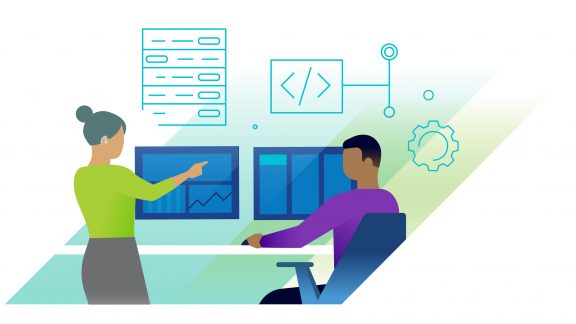 My VMware colleague Josh Miller recently explored how companies are extending a DevOps model into their infrastructure organizations and what can be done to speed that essential transition.
My VMware colleague Josh Miller recently explored how companies are extending a DevOps model into their infrastructure organizations and what can be done to speed that essential transition.
I want to talk about the step after that. Where do you go after achieving infrastructure-as-a-service?
Here’s how I think of it. Infrastructure as a service (IaaS) focuses on deploying infrastructure as quickly as possible and wrapping a service-oriented approach around it. That’s essential. But infrastructure in itself doesn’t add direct value to a business. Applications do that. In more and more industries the first company to release that new killer app is the one that wins or at least draws the most value.
So, while it’s essential that you deliver infrastructure quickly, it’s worth lies in helping deploy applications faster, build services around those applications, and speed time to market.
So you have IaaS, what’s next? Enter the concept of the platform as a service (PaaS). PaaS can be realized in a variety of ways. It might be through second generation platforms such as database-as-a-service or middleware-as-a-service. Or it could be via third generation platforms based on unstructured PaaS like containers (think Docker) or structured PaaS (think Pivotal Cloud Foundry).
The flexibility you have in terms of options here is significant and your strategy should be based on the needs of your developers. Many times we see strategies built around a tool name instead of the outcomes needed from that tool. Listening to the developer’s needs should help determine what the requirements are. Then build backwards from there. Often you won’t end up with the same tooling then you thought you would.
All the approaches to PaaS, though, share a key feature: they are driven by both a holistic and a life-cycle view of IT. In other words, it’s dangerous to view any IT function today as either separate from any other, or as a one-time deal. Instead, we need to be thinking of everything as connected and at the same time being constantly iterated and improved.
Work from that perspective and it’s easier to navigate the often daunting array of options you have when it comes to PaaS.
Certainly, as you move along this path, it’s very possible to end up with multiple, small cloud-native apps deployed on multiple platforms spread across multiple different data sets – so be aware of the lifecycle.
One other note: there are so many different tools coming to market so quickly in this space that what you pick now may not be what you use in a couple of years. A lot of our customers are nervous about that. So it’s worth remembering that these tools are designed so that you can move your code, and the work that you’re doing with the code, to whatever platform is best suited to deliver it to your customer.
The bottom line: Encourage your customers to try things out so they can create DevOps learning experiences. Be responsive in enabling developers to access new tools, while setting the right boundaries on how they can use those tools (think service definition) and where they bring them to bear. Approaching PaaS with a unified culture of continuous iteration and improvement will enable your developers with the tools they need to move fast, without losing the control and stability essential to IT operations.
=======
Brian Martinez is a Strategist with VMware Advisory Services and is based in New York.




